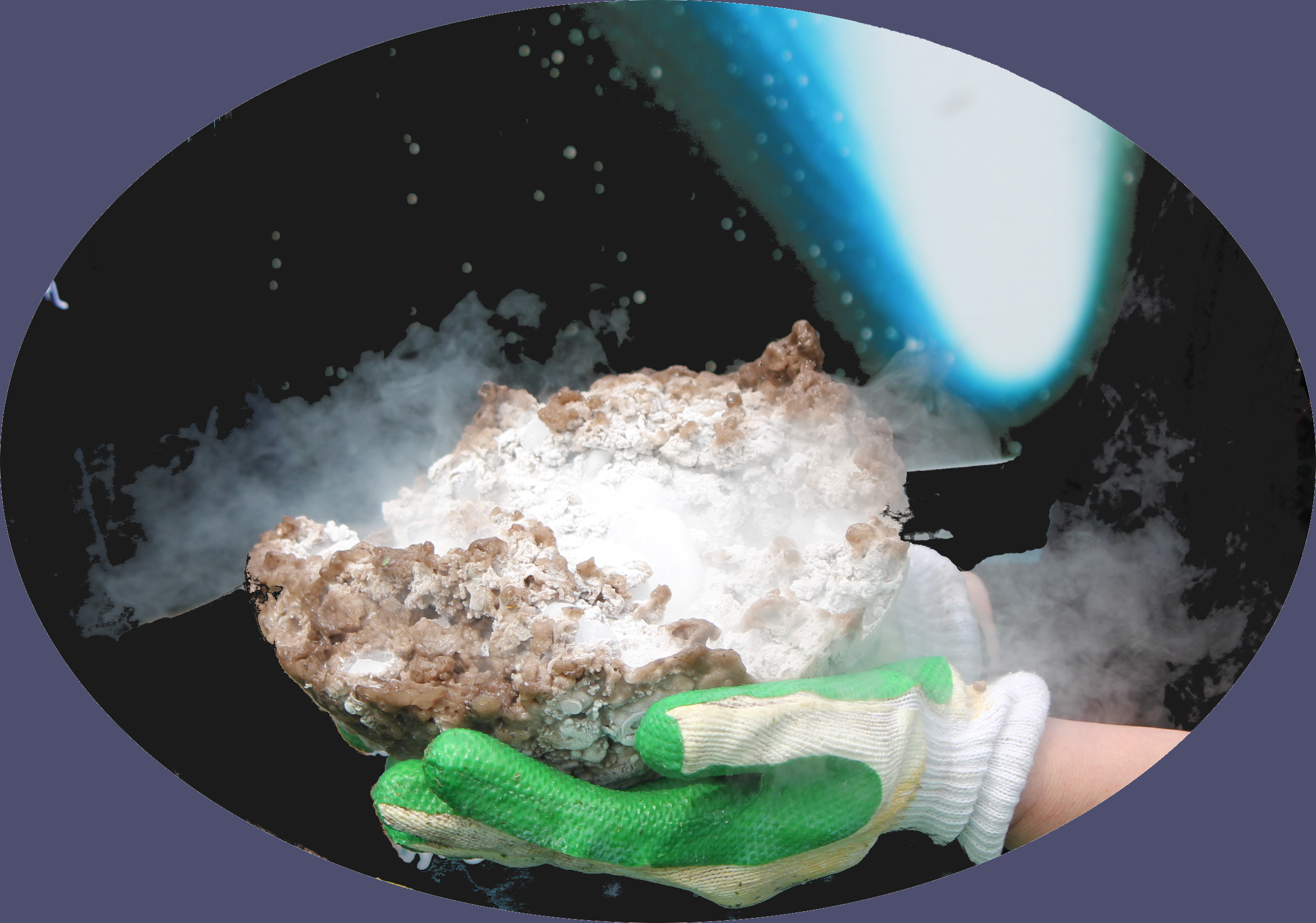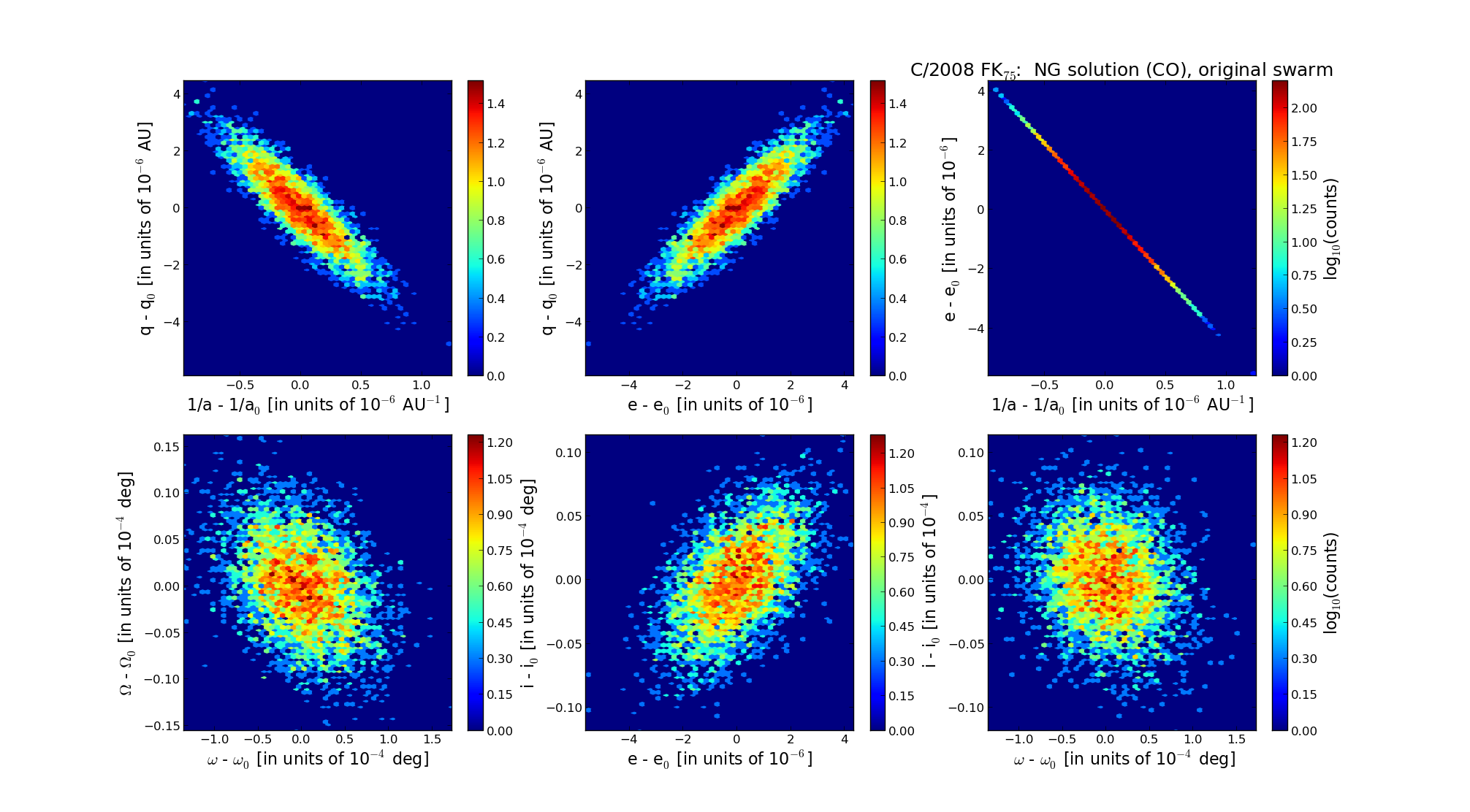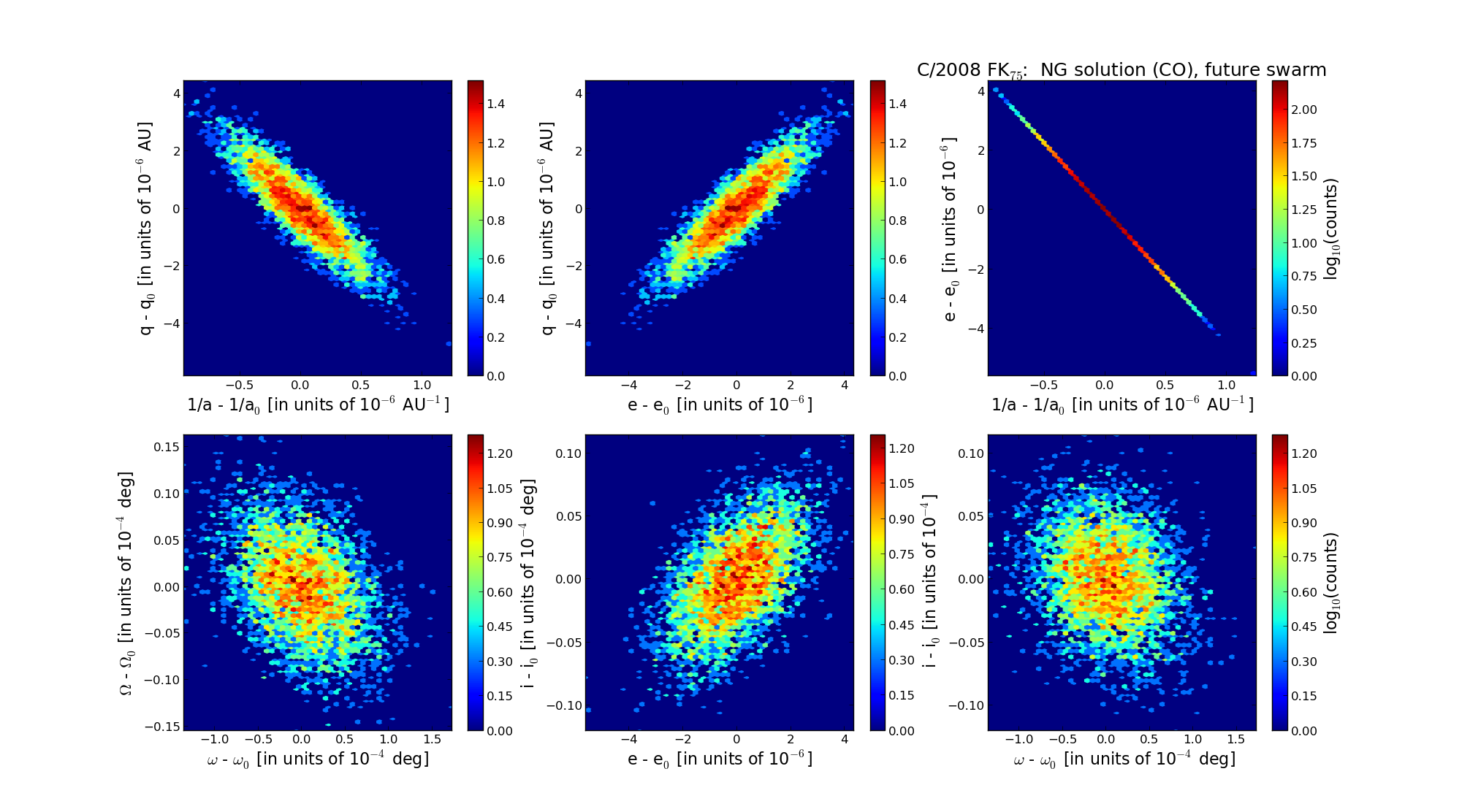| Solar System Dynamics & Planetology Group |
 |
C/2008 FK75 Lemmon – Siding Spring |  |
| Solar System Dynamics & Planetology Group |
 |
C/2008 FK75 Lemmon – Siding Spring |  |
| number of observations | 3702 |
| number of residuals | 7376 |
| data interval | 2008 Mar. 31 — 2013 Nov. 6 |
| rms [arcsec] | 0.48 |
| orbit quality class |
| Epoch (TT) | 20101011.0 | = JD 2455480.5 |
| time of perihelion passage (TT) | 20100929.255454 | ± 0.000282 |
| perihelion distance | 4.51081691 | ± 0.00000120 |
| eccentricity | 1.00250978 | ± 0.00000130 |
| argument of perihelion [deg] | 80.420309 | ± 0.000042 |
| longitude of the ascending node [deg] | 218.268538 | ± 0.000005 |
| inclination [deg] | 61.175925 | ± 0.000003 |
| inverse semimajor axis [10-6 au-1] | -556.39 | ± 0.29 |
| Nongravitational parameters [10-8 au/day2] | A1 = 1.86120 ± 0.04767 | A2 = -0.52217 ± 0.06047 | A3 = 0.27512 ± 0.01110 |
| where g(r)-like function (CO sublimation) were applied: | r0 = 10.0 | m = 2.0 | n = 3.0 | k = 2.6 |

| Epoch (TT) | 17051229 | |
| time of perihelion passage (TT) | 20100929.366429 | ± 0.000278 |
| perihelion distance | 4.50554277 | ± 0.00000122 |
| eccentricity | 0.99980678 | ± 0.00000131 |
| argument of perihelion [deg] | 80.520499 | ± 0.000042 |
| longitude of the ascending node [deg] | 218.228903 | ± 0.000005 |
| inclination [deg] | 61.190077 | ± 0.000003 |
| inverse semimajor axis [10-6 au-1] | 42.88 | ± 0.29 |

| Epoch (TT) | 23140220 | |
| time of perihelion passage (TT) | 20100930.240295 | ± 0.000281 |
| perihelion distance | 4.50753802 | ± 0.00000121 |
| eccentricity | 1.00033903 | ± 0.00000130 |
| argument of perihelion [deg] | 80.408981 | ± 0.000042 |
| longitude of the ascending node [deg] | 218.247732 | ± 0.000005 |
| inclination [deg] | 61.190648 | ± 0.000003 |
| inverse semimajor axis [10-6 au-1] | -75.21 | ± 0.29 |